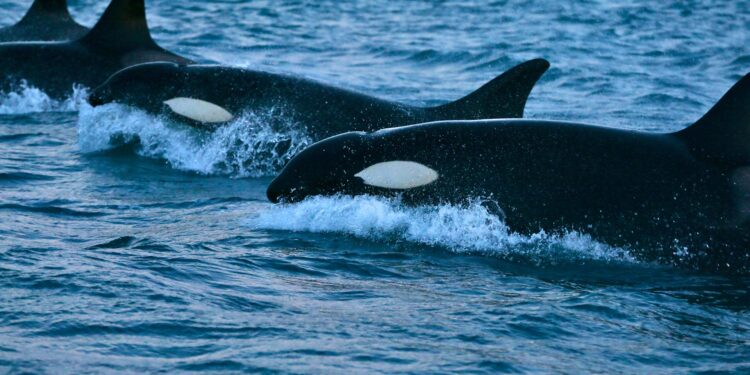New research reveals that some killer whales have developed a remarkable hunting strategy, teaming up in pairs to increase their chances of securing prey. This cooperative behavior, observed in the wild, allows these apex predators to coordinate attacks and maximize their bounty, shedding new light on the intelligence and social dynamics of orcas. Scientists say this discovery not only deepens our understanding of killer whale behavior but also highlights the complexity of marine ecosystems.
Killer Whales Showcase Teamwork to Boost Hunting Success
Scientists observing killer whales have uncovered fascinating insights into how these apex predators enhance their hunting efficiency through coordinated efforts. Certain pods have been documented hunting in pairs, using strategic positioning and communication to herd fish or isolate prey. This cooperative behavior increases their catch rate by allowing them to cover more ground and herd targets into confined spaces where escape proves difficult.
Key tactics involve synchronized swimming, vocal signals, and role specialization – with one whale corralling while the other captures the stunned prey. Below is a breakdown of their hunting dynamics that researchers have identified:
- Communication: Use of distinct calls to coordinate movements
- Positioning: Flanking prey from opposite sides
- Role division: Chaser and ambusher
- Energy conservation: Sharing workloads to reduce fatigue
| Hunting Role | Primary Task | Benefit |
|---|---|---|
| Chaser | Drive prey toward ambusher | Disorients prey, reduces escape paths |
| Ambusher | Capture prey in confined area | Ensures successful catch |
Scientific Insights Reveal How Pair Hunting Enhances Prey Capture
Recent observations and tagging data have revealed that killer whales, or orcas, strategically form hunting pairs to effectively corner and capture prey. By synchronizing their movements and communicating through subtle echolocation clicks and body language, these marine predators enhance their hunting efficiency far beyond solitary efforts. The collaborative tactic allows them to anticipate prey escape routes, creating a coordinated pincer movement that minimizes energy expenditure while maximizing the catch rate. This method is especially effective against schooling fish and larger prey, demonstrating advanced social hunting behaviors akin to those seen in terrestrial predators.
Key elements of pair hunting include:
- Role specialization: One whale acts as the chaser, driving the prey toward the other who is positioned to intercept.
- Communication: Subtle acoustic signals help maintain formation and timing between partners.
- Energy efficiency: Sharing the workload reduces individual fatigue, allowing longer hunts.
| Hunting Phase | Whale A Role | Whale B Role | Outcome |
|---|---|---|---|
| Approach | Silent Tail Approach | Positioning at Escape Path | Minimal Prey Alertness |
| Encirclement | Drive Prey Forward | Block Escape Route | Prey Herded |
| Capture | Distract/Chase | Strike | Successful Capture |
Experts Recommend Further Study of Cooperative Behaviors in Marine Predators
Recent observations of killer whales exhibiting coordinated hunting strategies have sparked a call within the marine biology community to deepen research into such cooperative behaviors. These apex predators are not only displaying social intelligence but also tactical collaboration that enhances their hunting success, a phenomenon that challenges previous assumptions of solitary predation in large marine mammals. Understanding these dynamics could provide critical insight into the evolution of social behavior in ocean predators and reveal broader ecological impacts.
Experts emphasize that a comprehensive approach involving advanced tracking technology and long-term behavioral studies is imperative. Key focus areas should include:
- Communication methods: Decoding vocal and non-vocal signals during group hunts.
- Role specialization: Identifying individual functions within hunting pairs or groups.
- Environmental triggers: Understanding how ocean conditions influence cooperative tactics.
| Behavior Aspect | Observed Effect | Research Priority |
|---|---|---|
| Group Coordination | Increased prey capture rate | High |
| Communication Signals | Role assignment clarity | Medium |
| Environmental Influence | Adaptive hunting techniques | High |
Wrapping Up
As research continues to unveil the sophisticated hunting strategies of killer whales, the discovery of their cooperative pair hunting highlights the remarkable adaptability and intelligence of these apex predators. Understanding these behaviors not only enriches our knowledge of marine ecosystems but also underscores the complexity of animal cooperation in the wild. Future studies promise to shed further light on how such teamwork influences the survival and success of killer whales in the ever-changing ocean environment.






























